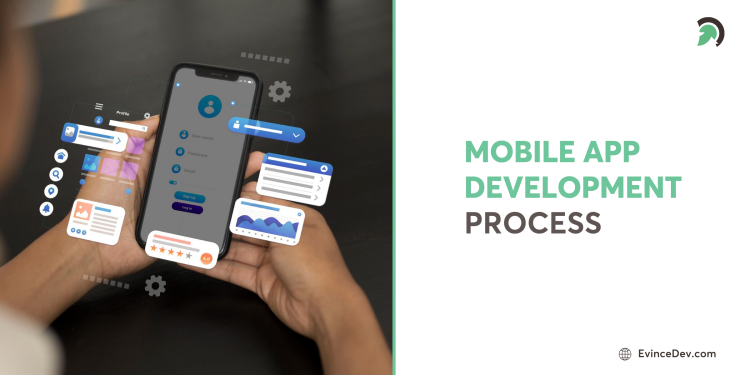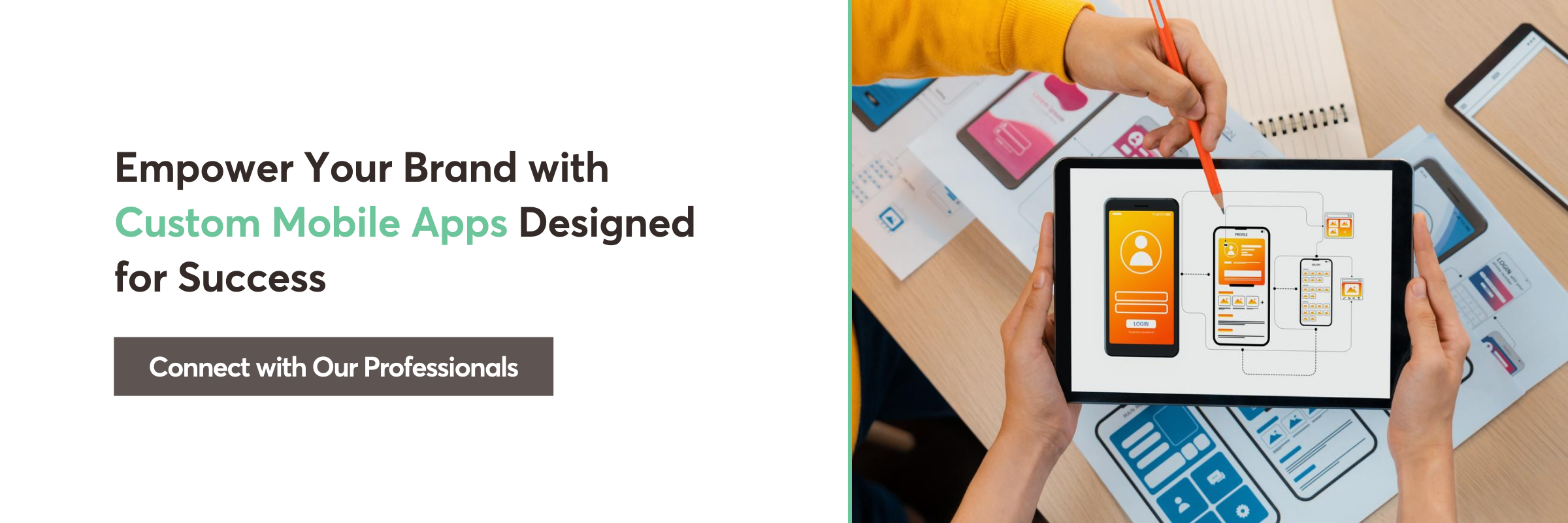Mobile app development is the process of creating software applications that run on mobile devices. With the increasing use of smartphones and tablets, mobile app development has become a crucial aspect of business growth and user engagement. This guide will explore the basics of mobile app development, the importance of this process, key elements involved, steps in the process, and choosing the right development platform.
Mobile app development: turning caffeine into code since the dawn of smartphones.
Understanding the Basics of Mobile App Development
Mobile app development involves designing and building applications specifically for mobile devices, such as smartphones and tablets. These applications can be developed for various purposes, including entertainment, productivity, e-commerce, and more. To fully comprehend the significance of mobile app development, let’s delve into its importance.
- Consumers are projected to spend approximately $125 billion on mobile app purchases from app shops by 2027, according to Statista.

Importance of Mobile App Development
Mobile apps play a vital role in today’s digital landscape. They offer businesses a direct channel to connect with their target audience and engage with customers. Having a mobile app can enhance brand visibility, attract new customers, improve customer loyalty, and increase revenue. By providing a seamless user experience, mobile apps contribute to customer satisfaction and strengthen brand image.
Furthermore, mobile apps, combined with AI, have revolutionized how businesses operate. As smartphone usage continues to rise, AI-driven features like chatbots, predictive analytics, and personalized content have become essential tools for businesses to stay competitive. By offering AI-enabled mobile apps, businesses can tap into this vast user base, streamline operations, and establish a stronger presence in the digital realm.
Steps in the Mobile App Development Process
1. Conceptualizing the App Idea
The first step in the mobile app development process is to conceptualize the app idea. This involves identifying a problem or need that the app will address and brainstorming potential solutions. Extensive market research and competitor analysis can help refine the app idea and ensure its viability.
During the conceptualization phase, it is crucial to consider the target audience’s preferences and behavior. Understanding their needs and pain points will enable developers to create an app that truly resonates with users. Additionally, exploring emerging technologies and trends can inspire innovative ideas that set the app apart from competitors.
2. Planning the App Development
Once the app idea is solidified, the next step is to create a detailed plan for app development. This includes defining the app’s core features, establishing the target audience, determining the budget and timeline, and choosing the appropriate development approach.
Functional and Non-Functional Requirements: The Cornerstones of Mobile App Development
Functional Requirements
Functional requirements outline the specific functionalities and features the mobile app must possess to meet its intended purpose. These requirements define what the app should do and how it should interact with users. When defining functional requirements, consider factors such as:
- Core features: What essential functionalities does the app need to provide?
- User interactions: How will users interact with the app? What actions can they take?
- Data input and output: What type of data will the app need to process and display?
- Integration with other systems: Will the app need to integrate with other software or platforms?
Non-Functional Requirements
Non-functional requirements focus on the app’s overall quality, performance, and usability. These requirements ensure that the app meets the expectations of users and stakeholders. Key non-functional requirements to consider include:
- Performance: How fast should the app respond to user input? What is the acceptable load time?
- Security: What measures will be taken to protect user data and prevent security breaches?
- Usability: How easy is the app to use? Is the interface intuitive and user-friendly?
- Scalability: Can the app handle increasing user loads and data volumes?
- Compatibility: Will the app work on different devices and operating systems?
During the planning phase, it is essential to consider scalability and future updates. Anticipating potential growth and incorporating flexibility into the app’s architecture will save time and resources in the long run. Moreover, creating a comprehensive project plan with clear milestones and deliverables ensures that the development process stays on track.
Technology Stack
Choosing the right technology stack is crucial for building a successful mobile app. Consider factors like app complexity, performance requirements, team expertise, and third-party integrations. Popular options include:
- Programming Languages: Swift/Objective-C (iOS), Kotlin/Java (Android), JavaScript (React Native, Flutter)
- Frameworks and Libraries: UIKit/SwiftUI (iOS), Jetpack Compose/Android View System (Android), React Native, Flutter
- Development Tools: Xcode (iOS), Android Studio (Android), Visual Studio Code
- Backend Development: Python, Ruby, JavaScript, PHP, Django, Ruby on Rails, Node.js, Laravel
- Databases: MySQL, PostgreSQL, MongoDB
- Cloud Platforms: AWS, GCP, Azure
3. Developing the App
Once the app’s design is finalized, the development phase begins. It involves writing code, implementing features, and integrating the necessary functionalities. Agile development methodologies, such as Scrum or Kanban, can streamline the development process and facilitate collaboration among team members.
During the development phase, it is important to prioritize clean code and maintainable software architecture. Following coding best practices and adhering to industry standards will ensure that the app is scalable, efficient, and easy to maintain. Regular code reviews and continuous integration practices can help identify and resolve any issues early in the development process.
4. Testing the App
Thorough testing is essential to ensure the app functions as intended and is free from errors or bugs. Testing should cover various scenarios and devices to ensure compatibility and a consistent user experience. Testers should provide detailed feedback, which can be used to fix any issues before the official launch.
Why do developers prefer dark mode? Because light attracts bugs!
During the testing phase, it is crucial to conduct both manual and automated testing. Manual testing allows for a human perspective, while automated testing ensures comprehensive coverage and faster detection of potential issues. Additionally, beta testing with a group of real users can provide valuable insights and help identify any remaining bugs or usability concerns.
5. Launching the App
After the app is extensively tested and refined, it’s ready for launch. Launching the app involves submitting it to app marketplaces, such as the Apple App Store, Google Play Store and others. App store optimization techniques, such as keyword optimization and engaging descriptions, can increase the app’s visibility and download numbers.
During the launch phase, it is important to create a marketing strategy to promote the app and generate initial traction. Leveraging social media platforms, influencer partnerships, and targeted advertising can help reach the app’s target audience and increase its chances of success. Monitoring user feedback and reviews post-launch is also crucial for making necessary improvements and updates.
Good developers know that behind every successful app, there’s a pile of broken code and a lot of late nights.
6. Post-Launch App Maintenance
App development doesn’t end with the launch; it requires ongoing maintenance and updates. Regularly monitoring app performance, user feedback, and emerging trends can help identify areas for improvement and new feature additions. Maintenance also involves addressing any performance issues, bugs, or security vulnerabilities that may arise.
During the post-launch phase, it is important to prioritize user support and engagement. Promptly addressing user inquiries and feedback can enhance user satisfaction and loyalty. Additionally, staying up-to-date with the latest technologies and industry trends ensures that the app remains competitive and relevant in the ever-evolving mobile app landscape.
Key Elements in Mobile App Development
During the mobile app development process, several key elements must be considered to ensure the successful creation of an app. These elements include:

User Interface (UI)
A well-designed user interface is crucial for an engaging and intuitive app. It encompasses the visual elements and interactions that users will experience while using the app. The UI should be visually appealing, easy to navigate, and consistent with the brand’s identity.
User Experience (UX)
User experience focuses on how users interact with the app and aims to create a seamless and enjoyable experience. This includes factors such as ease of navigation, responsiveness, and overall satisfaction. To achieve a great UX, developers conduct user research and testing to understand user preferences and optimize the app accordingly.
Functionality
App should offer the functionality and features that meet the user’s needs and expectations. This entails understanding the target audience and incorporating the necessary functionalities into the app. Whether it’s a social media app, a gaming app, or a productivity app, the functionality should align with the app’s purpose.
Performance
App performance plays a crucial role in user satisfaction. It involves optimizing the app to ensure fast loading, smooth transitions, and efficient resource management. Developers employ various techniques, such as code optimization, resources optimization, memory leakages, background operations, local storage and much more, to enhance the app’s performance and deliver a seamless user experience.
Security
Mobile apps handle sensitive user data, making security a top priority. Implementing robust security measures protects user information and builds trust with users. This includes encryption of data, secure authentication methods, reverse engineering prevention, and regular security audits to identify and address vulnerabilities.
By considering these key elements, mobile app developers can create high-quality apps that not only meet user expectations but also drive business growth. The mobile app development process is a meticulous and iterative one, involving collaboration between designers, developers, and stakeholders to ensure the app’s success.
Choosing the Right Mobile App Development Platform
When it comes to selecting a mobile app development platform, there are several options to consider. The choice depends on factors such as target audience, app complexity, budget, and time constraints. The three key platforms in mobile app development are:
iOS App Development
iOS app development involves creating applications specifically for Apple devices, such as iPhones and iPads. iOS offers a unified user experience and strict app store guidelines, making it an ideal platform for targeting Apple users. However, developing for iOS requires knowledge of Apple’s programming language, Objective C and Swift, with an addition of Swift UI, and adherence to Apple’s development guidelines.
Android App Development
Android app development focuses on creating applications for devices running the Android operating system. Android is the most widely used mobile operating system globally, offering a vast user base and device diversity. Developing for Android requires knowledge of Java or Kotlin programming languages and familiarity with the Android developer ecosystem.
Cross-Platform App Development
Cross-platform app development allows developers to create apps that run on multiple platforms, such as iOS and Android, using a single codebase. Cross-platform frameworks, such as React Native, Flutter, Kotlin Multiplatform, or Xamarin, enable code reuse and faster development cycles. This approach is beneficial for projects with limited resources or tight deadlines.
Ready to Transform Your Idea into a Functional Mobile App?
We hope this guide has given you a clear understanding of the mobile app development journey. The success of your app hinges on how well each phase of development is executed. Remember, app development doesn’t end at launch—regular updates and maintenance are crucial to keeping your app running smoothly and maximizing its potential for long-term success.
Our team of mobile app developers is dedicated to following best practices at every stage, ensuring your app is both user-friendly and feature-rich. If you have any questions about developing a mobile app strategy or need clarity on the app design process, don’t hesitate to reach out to us.






